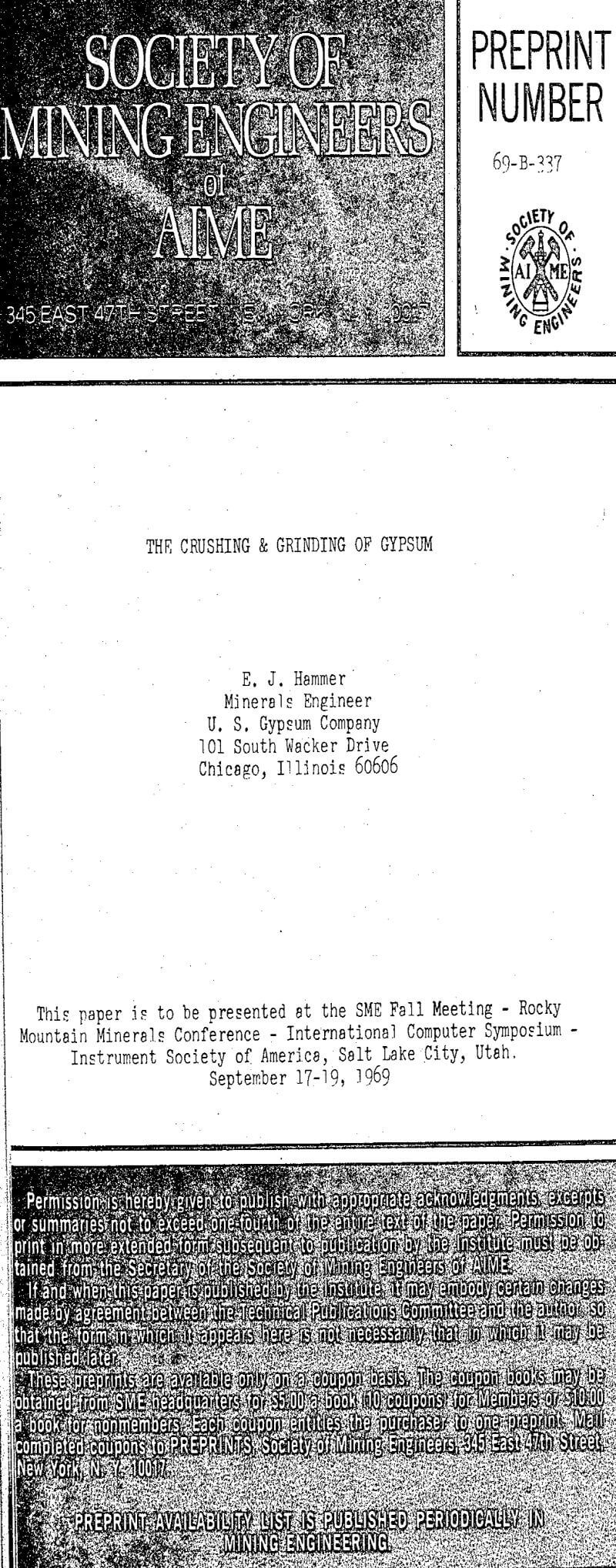In the crushing and grinding of metallics for beneficiation, the sizing is normally done to liberate the metals or sulphides for further processing to improve recoveries of the basic metals or minerals. The objective is to reduce the ore in size through various closely controlled stages to that degree of fineness which gives an economic liberation of valuable mineral, but which avoids as much as possible the production of sliming fractions. A different philosophy applies to the crushing and grinding of Gypsum.
Gypsum as a mineral (CaSO4·2H2O) is number 2 on the Mohs scale of hardness; only Talc is softer. This would lead one to believe that it should be easy, to crush, like coal for example, and our equipment was formerly designed on this basis. Within the past 20 years, however, equipment suppliers guaranteeing their equipment performance have had to “beef-up” the design. Gypsum just didn’t crush like a soft rock. Despite being soft, Gypsum is tough, a factor which is of critical importance when developing equipment specifications.
To prevent excessive delays at this point, proper crusher feed and feeder design is not enough. Close cooperation with the drilling and blasting must be maintained. One of the easiest places for cost reductions is by decreasing the powder usage. Since the emphasis is always on minimum cost per ton, this is looked at closely. However, large rock can cause excessive crusher delays. We have placed the primary crushing in the mining cost center in our accounting. This gives the Mining Superintendents both authority and responsibility to coordinate both activities.
The rock size in our quarries and mines depend on numerous factors. Method of transport (conveyor belts versus trucks), method of loading equipment (shovels, Joy mine type cars, front end loaders, etc.) all of which directly effect the rock sizing to the primary crusher.
In new installations., a single roll, toothed crusher of the heavy-duty type is recommended. The reservation to this is proper engineering of the feed to the crusher. That is, the size crusher feed opening with respect to the size rock anticipated. We have presently in use Jaw, Gyratory, Cone and Single or Double Roll crushers. All of these will work, with the usual criteria for final selection being the mining method (as it effects the size of rock fed to the primary crushing plant); tons per hour required; amount of headroom available for the installation; type of secondary crushing to be employed; and the lowest,capital investment consistent with these requirements.
The most commonly used unit is a Roller Mill with an integrated air separator, a very effective fine grinding machine, but requiring high capital investment. We still use Buhr Stones in few places (flat, circular granite stones operating like, a disc grinder) and Entoleters, Rod Mills and Tube Mills might also be used.
